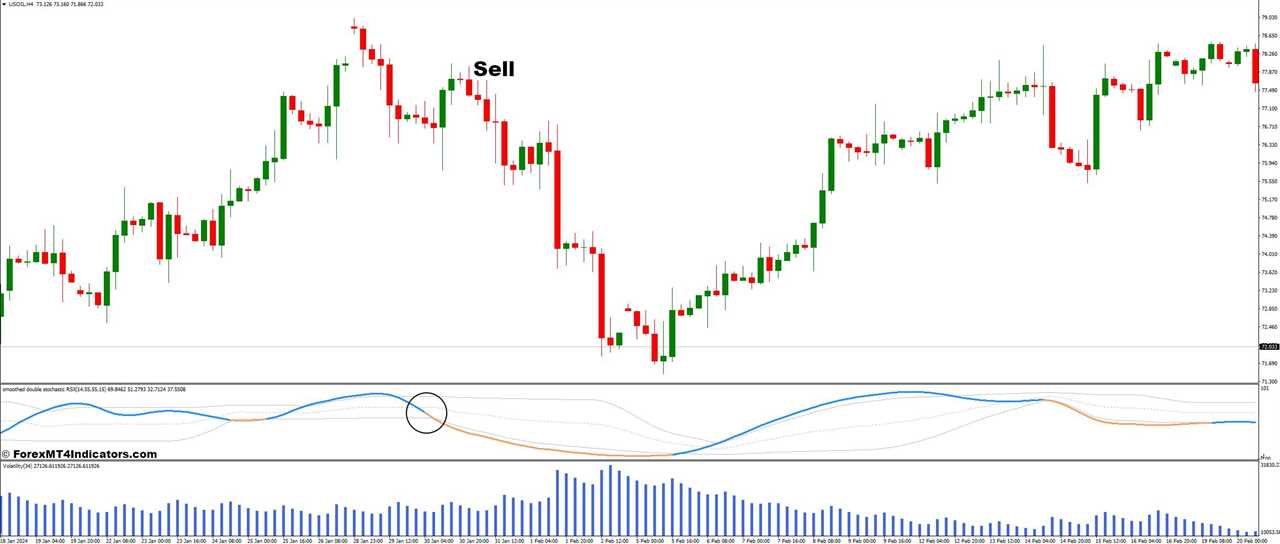||
The Volatility and Double Stochastic RSI Forex Trading Strategy stands out in the fast-paced world of forex trading for its powerful combination of technical precision and adaptability to market conditions. By integrating the Relative Strength Index (RSI) with dual stochastic oscillators, this strategy offers traders a robust framework to identify high-probability trading opportunities with enhanced clarity and confidence.
What sets this strategy apart is its dual stochastic approach, which goes beyond the traditional RSI by providing a deeper insight into market momentum and potential reversals. With two stochastic oscillators at play, traders gain a more nuanced understanding of price movements, empowering them to make more informed decisions. Moreover, the strategy’s incorporation of volatility analysis adds another layer of sophistication. Volatility indicators like Average True Range (ATR) help traders gauge the intensity of price fluctuations, enabling them to adjust their strategies dynamically in response to changing market conditions.
The Volatility and Double Stochastic RSI strategy represents a powerful tool in a trader’s arsenal, combining advanced technical analysis with a keen understanding of market dynamics.
Volatility Indicator
The Volatility Indicator plays a critical role in the Volatility and Double Stochastic RSI Forex Trading Strategy by providing insights into market dynamics and price fluctuations. One of the commonly used volatility indicators in this strategy is the Average True Range (ATR). ATR measures the average range between highs and lows over a specified period, reflecting the level of price volatility.
Traders use ATR to gauge the intensity of price movements. Higher ATR values indicate greater price volatility, suggesting potential trading opportunities with larger price swings. On the other hand, lower ATR values indicate decreased volatility, often signaling periods of price consolidation or low market activity.
In the context of the strategy, volatility analysis helps traders adjust their trading approach based on current market conditions. During high volatility periods, traders may opt for wider stop-loss orders and target larger price movements. Conversely, during low volatility periods, traders may adjust their strategies to focus on shorter-term price fluctuations or wait for clearer trading signals.
By integrating volatility analysis into their decision-making process alongside other technical indicators, traders can enhance their understanding of market behavior and make more informed trading decisions. This adaptive approach not only improves trading precision but also helps manage risks effectively in fluctuating market environments.
Double Stochastic RSI Indicator
The Double Stochastic RSI indicator is a key component of the Volatility and Double Stochastic RSI Forex Trading Strategy, enhancing the strategy’s ability to identify potential trade opportunities with precision. Unlike traditional single stochastic indicators, which assess the relationship between a closing price and its price range over a specified period, the double stochastic approach uses two stochastic oscillators.
These oscillators typically employ different timeframes or settings to capture distinct aspects of market momentum and trend strength. For instance, one stochastic oscillator may have shorter parameters to react swiftly to short-term price movements, while the other oscillator could use longer parameters to filter out noise and confirm longer-term trends.
Traders rely on the Double Stochastic RSI indicator to pinpoint potential overbought and oversold conditions in the market. By analyzing the interactions and signals generated by both stochastic oscillators, traders can make more informed decisions regarding entry and exit points. Divergences and crossovers between the two oscillators often serve as strong signals for traders seeking to capitalize on market movements and anticipate trend reversals.
How To Trade With Volatility and Double Stochastic RSI Forex Trading Strategy
Buy Entry

- Ensure ATR (Average True Range) indicates sufficient volatility.
- Confirm Double Stochastic RSI shows oversold conditions.
- Wait for both stochastic oscillators to show a crossover or divergence indicating potential upward momentum.
- RSI should be rising and above the oversold threshold (e.g., above 30).
- Enter a long position (buy) at the current market price or on a slight retracement.
- Place the stop-loss below the recent swing low or based on a percentage of ATR to account for volatility.
- Set a profit target based on ATR to capture potential price movement.
- Alternatively, use a trailing stop to secure profits as the trade progresses.
Sell Entry

- Ensure ATR indicates sufficient volatility.
- Confirm Double Stochastic RSI shows overbought conditions.
- Wait for both stochastic oscillators to show a crossover or divergence indicating potential downward momentum.
- RSI should be declining and below the overbought threshold (e.g., below 70).
- Enter a short position (sell) at the current market price or on a slight retracement.
- Place the stop-loss above the recent swing high or based on a percentage of ATR to accommodate potential market fluctuations.
- Set a profit target based on ATR to capture potential downside movement.
- Consider using a trailing stop to lock in profits as the trade moves in your favor.
||
-----------------------------------------------------
By: Tim Morris
Title: Volatility and Double Stochastic RSI Forex Trading Strategy
Sourced From: forexmt4indicators.com/volatility-and-double-stochastic-rsi-forex-trading-strategy/?utm_source=rss&utm_medium=rss&utm_campaign=volatility-and-double-stochastic-rsi-forex-trading-strategy
Published Date: Mon, 16 Sep 2024 01:00:24 +0000
Read More
.png) InvestingStocksToolsClubsVideosPrivacy PolicyTerms And Conditions
InvestingStocksToolsClubsVideosPrivacy PolicyTerms And Conditions
